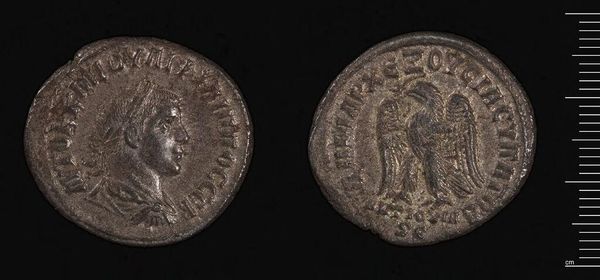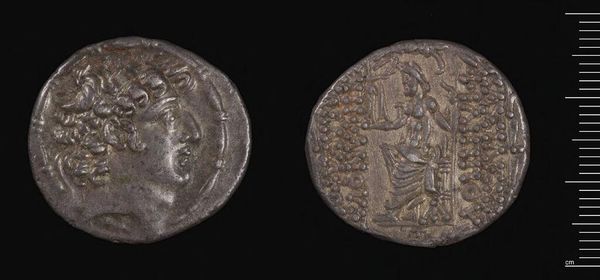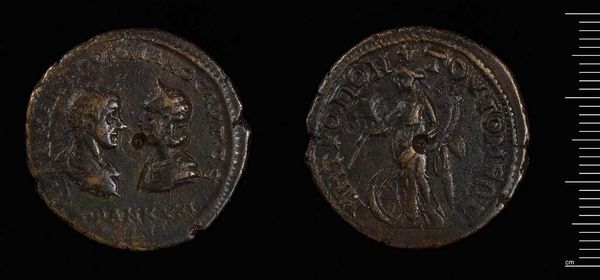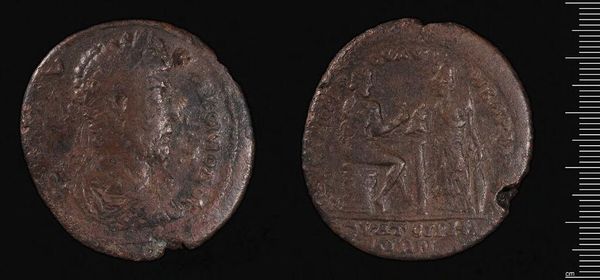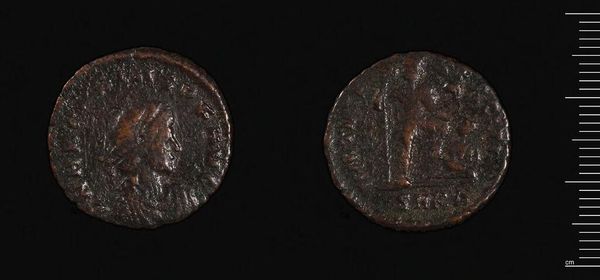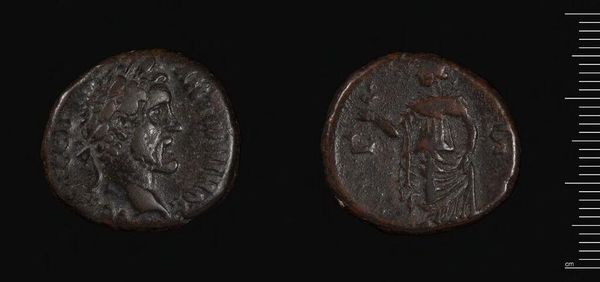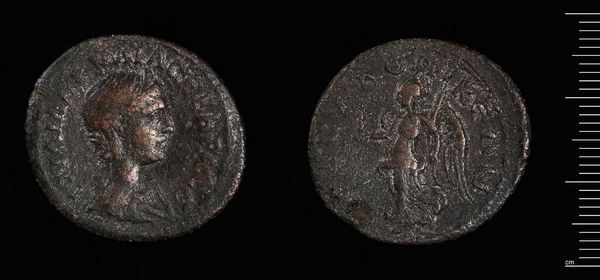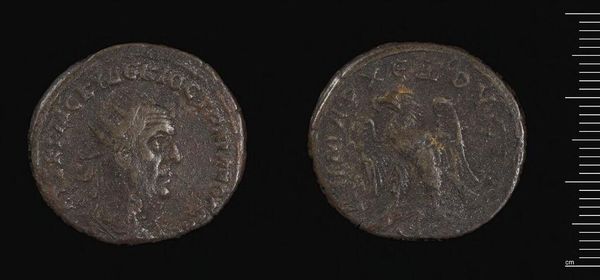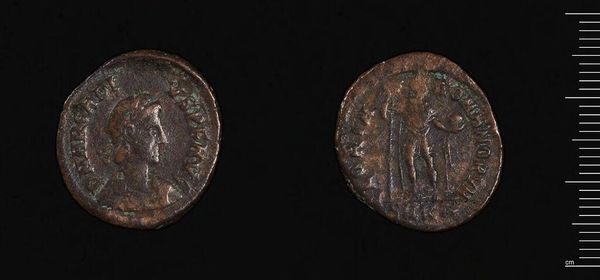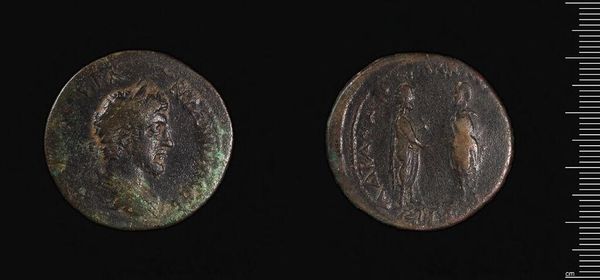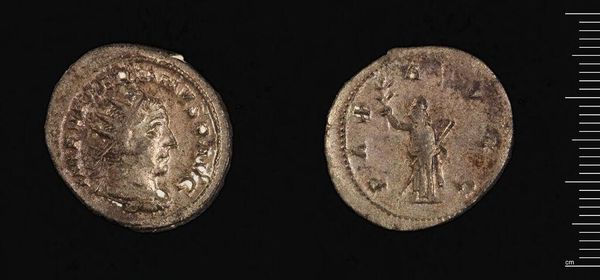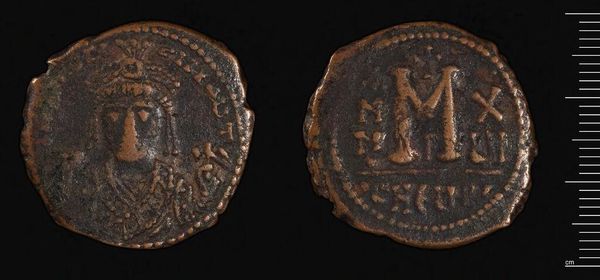
Dimensions: 15.91 g
Copyright: CC0 1.0
Curator: Let's discuss this sestertius of Philip I, also known as Philip the Arab, currently held in the Harvard Art Museums. Editor: My first impression is one of enduring authority, despite the coin's wear. That profile, the laurel wreath – instantly recognizable. Curator: Absolutely. The sestertius served as a powerful tool for projecting imperial power. Consider its mass production; it would have circulated widely throughout the empire, carrying Philip's image and, by extension, his legitimacy. Editor: I see the figure on the reverse. The goddess Roma, perhaps? She’s often linked to ideals of power, destiny, and the eternal city. Curator: Indeed, Roma embodies the strength and continuity of the empire. The visual program is deliberate, associating Philip with these established virtues. Editor: It’s intriguing how such a small object can carry such a heavy weight of meaning and political agenda. Curator: Precisely. It’s a testament to the enduring power of symbols within a specific historical and cultural context. Editor: I'm left contemplating the hands this coin has passed through, each one a silent witness to history.
Comments
No comments
Be the first to comment and join the conversation on the ultimate creative platform.

